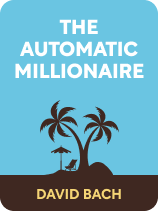

This article is an excerpt from the Shortform book guide to "The Automatic Millionaire" by David Bach. Shortform has the world's best summaries and analyses of books you should be reading.
Like this article? Sign up for a free trial here .
How many years do you have left until you hope to retire? Considering your age and the time you have until retirement, how would you balance your investment portfolio?
According to David Bach, the author of The Automatic Millionaire, the key factors to consider when it comes to investing for retirement are how long you intend to invest your money for and how aggressively you want to invest. The younger you are, the more you can afford to take risks with your money because you have more time on your side.
In this article, we’ll explain how to invest for retirement for optimum return/safety ratio.
How to Diversify Your Retirement Investments
To ensure that you get the best return from your retirement plan, you need to diversify your investments—this means that you need to invest your money in a combination of cash, bonds, and stocks. The more diversified your investments, the safer your money—stocks may lose their value, but if your money is diversified, the overall value of your plan will stay consistent. However, the safer your investments, the less likely you are to make money on your plan.
| What Does It Mean for an Investment to Be “Safe”? Bach explains that you need to diversify your investments to ensure that your money is safe, but he doesn’t elaborate on why some investment options are “safer” than others. We’ll therefore explain the difference between “safe” and “aggressive” investments: Safer investments (cash and bonds) make less money because they are based on short-term investments with minimal risk. They are less risky because the value of cash and bonds don’t change according to the whims of the stock market—their value remains stable. Growth investments (stocks equate to a share of ownership in a company) create more money but are also susceptible to income fluctuations that impact the value of your investment. A company’s value fluctuates according to how well it’s performing and the economy in general. Therefore, stocks are ranked by how safe they are, or in other words, how likely the company is to grow in value. The riskier the investment, the more aggressive it is. For example, an investment in an established company such as Netflix is classed as a growth investment because the company is expected to continue to perform well. However, if you invest in an unknown start-up based on the assumption that it will eventually become as valuable as Google, this is classed as an aggressive growth investment: If your prediction is right, your shares in the company will be worth a lot more than what you initially invested. But, if the company fails, your investment will lose value. |
How to Change Your Diversification Strategy Over Time
Further, Bach argues that your diversification strategy needs to change over time to reflect your age and your income goals. The closer you get to retirement age, the more you need to play it safe and protect your money.
The table below illustrates the recommended balance for each age group to invest their retirement money.
| Order of Risk | Your Age and How Much to Invest in Each Option | |||
| (Safest first) | Under 30 | 30-50 | 50-60 | 60 Plus |
| Cash | 5-10% | 5-10% | 5-10% | 10-15% |
| Bonds | 5-15% | 15-25% | 20-30% | 25-35% |
| Growth & Income Investments | 30-40% | 35-45% | 30-40% | 30-40% |
| Growth | 40-50% | 25-35% | 15-25% | 10-20% |
| Aggressive Growth Investments | 5-10% | 5-10% | 0-5% | 0-5% |
How to Manage Your Investments
If you don’t feel comfortable managing these combinations, Bach suggests that you invest in mutual funds or exchange-traded mutual funds (ETFs) as they automatically manage and diversify your money for you based on your requirements (how much risk you’re willing to take). They’re also easy to use. Alternatively, employee and individual retirement plans offer “asset allocation funds” or “balanced funds”—these funds also manage your combinations for you.
In addition, many employee and individual retirement plans manage these diversified combinations for you based on your age and the date you expect to retire—they are commonly referred to as “targeted-date funds”. These plans automatically balance your investments to reduce risks the closer you get to retirement age. The main difference with these plans is how they continue to be managed once you reach your retirement date. There are two options:
- Plans that take you through retirement: These plans are managed to produce ongoing income for a projected number of years after you retire. Bach suggests you use this option if you plan to retire young (early sixties).
- Plans that take you to retirement: These plans tend to concentrate solely on investments in cash and bonds by the time you reach retirement. Bach suggests you use this option if you plan to retire in your seventies or eighties.
| What You Need to Know About Mutual Funds, ETFs, and Targeted-Date Funds Mutual funds, ETFs, and targeted-date funds are popular choices thanks to the way they conveniently manage your retirement investments for you. However, while Bach mentions the benefits of each fund, he doesn’t include important information you need to consider before you make your decision: Mutual FundsThe fees you’re charged vary quite significantly depending on which fund you choose—the higher the fee, the less you earn on your investments.Your results depend on how efficiently the people in charge manage your fund.You may be subjected to additional tax payments depending on how your fund is managed. ETFSYour investments may be limited to large-cap stocks (companies with over $10 billion worth of investments)—this reduces the diversity of your investment portfolio.You’re more likely to pay higher fees and earn less than if you invest directly into stocks.The tax rules vary according to what type of investment options you choose so you’ll need to ensure that you’re well informed before you sign up. Targeted-Date FundsWhile various banks and brokerages might offer a retirement plan for a specific year, each plan will consist of different investments and will produce different results depending on the diversity ratio used. For example, you may have a 2050 plan that earns significantly less than your friend’s 2050 plan because both plans follow different investment ratios. In addition, each fund will have different fees that impact the value of your earnings. So, though targeted funds are a convenient way to set up your retirement plan, you’ll benefit more if you shop around and compare the way the different funds are managed. Here’s some additional information about each type of targeted-date fund: Plans that take you through retirement: Your investments continue to adjust and rebalance throughout your retirement. This means that your investments are likely to grow during the early years of your retirement. Growth investments do come with risks—if you don’t have additional income to fall back on, this plan may be too risky for you. Plans that take you to retirement: Once you reach your retirement date, the diversity of your portfolio remains static. This means that your investment options are limited from the date of your retirement. While this plan limits the growth of your investments after your retirement date, it is the safest option if you don’t have additional income to rely on. |
Your Company’s Stock Options
If you work for a publicly-traded company and sign up for a 401(k) with them, your plan may offer you options to invest in your company’s stock. Bach urges you to consider your company’s stock as an aggressive growth investment: You should not invest more than 5-25% of your retirement money into your company’s stock, no matter how successful and stable they are. This is because you’ll reduce your diversification and increase your risk if you invest too much—if your company fails, you could lose your investment!
(Shortform note: If you work for a stable, established company, you may question why Bach urges you to consider all company stocks as aggressive growth investments. However, all company stocks are susceptible to unexpected fluctuations. For further clarification, refer to The Smartest Guys in the Room—this book offers a detailed explanation of how established companies can fail, create losses for shareholders, and wipe out employee retirement accounts.)
| Further Advice on How to Invest for Retirement If you’re looking to learn more about applying Bach’s suggestions and diversifying your investments, Sethi provides a lot more information in I Will Teach You to Be Rich about how stocks are classified and what should be included in a diverse investment portfolio. According to Sethi, stocks are categorized by the amount current shareholders are investing into the company: Large-Cap: More than $10 billion Mid-Cap: $1-5 billion Small-Cap: Less than $1 billion In addition, he explains that stocks fall under the following categories: International: Stocks from companies in other countries Growth: Stocks expected to grow in value Value: Stocks that are low priced compared to their actual value Sethi suggests that you invest in each of the six types of stocks, as well as bonds, to create a diversified investment portfolio. In contrast to Bach, Sethi suggests you avoid investing in cash as it will lose value over time due to inflation. As a result, his advice for asset allocation by age differs slightly from Bach’s recommendation: Age 35-45: 10% bonds and 90% stocks Age 55: 31% bonds and 69% stocks Age 65: 47% bonds and 53% stocks Socially Responsible Investing When you invest in stocks, you buy a share of a company—this share supports the company’s growth. For this reason, it’s important to consider who your growth and aggressive growth investments really support. Many investors actively avoid investing in companies that conflict with their values—for example, they might avoid investing in a tobacco or firearm company because they don’t want to support those industries. As well as looking at what investments you want to avoid, consider choosing to invest in industries that you want to support—this type of investment is called socially responsible investing (SRI). When you use this strategy, you choose investments that align with your values—you benefit causes you care about while investing in your future. |

———End of Preview———
Like what you just read? Read the rest of the world's best book summary and analysis of David Bach's "The Automatic Millionaire" at Shortform .
Here's what you'll find in our full The Automatic Millionaire summary :
- A simple but powerful action plan for you to quickly automate your finances
- How to grow your finances with just a few dollars a day
- An exploration of why people fail to prepare for their financial futures






